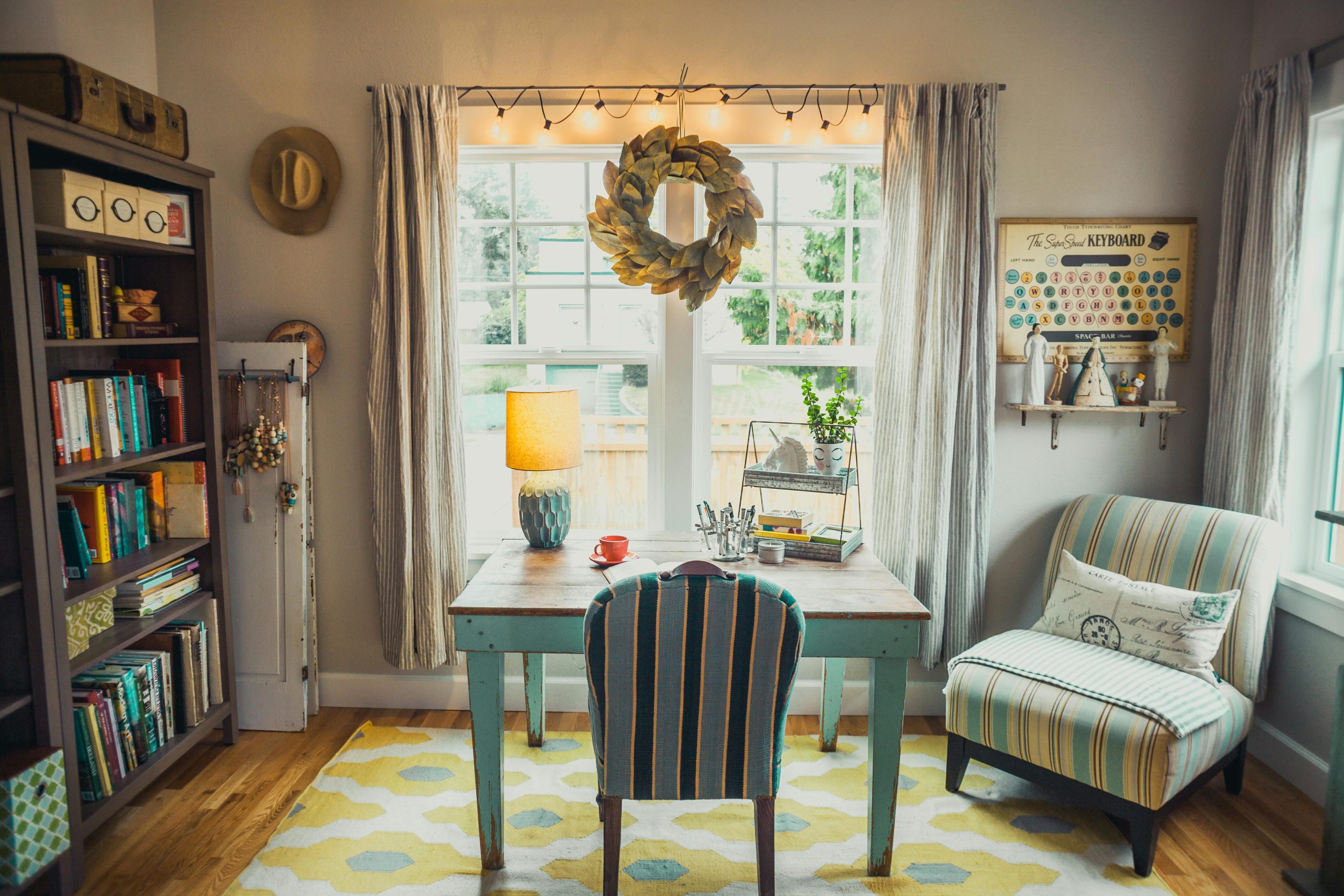Are you feeling stuck, uninspired, or just plain distracted every time you sit down to write? You’re not alone. Sometimes, the biggest obstacle to creative flow isn’t the writer’s block—it’s the space you’re working in. A well-organized, thoughtfully designed workspace can make all the difference in how focused, inspired, and productive you feel.
Relaxed: Create a Space That Feels Good to Be In
Your workspace should feel like a retreat from the chaos—not an extension of it. A relaxed environment helps lower stress, ease tension, and prime your brain for creative thinking. Start by choosing a spot that feels good to you.
Ideally, your space should have natural light, which boosts your mood and reduces eye strain. If a window isn’t an option, opt for soft ambient lighting or a warm desk lamp instead of harsh overhead lights.
Make sure your chair and desk setup supports your body. Sitting for long periods is hard enough—don’t make it harder with a stiff chair or a desk that’s the wrong height. Ergonomic furniture is ideal, but even a few throw pillows, a back cushion, or a footrest can make a big difference.
Then, add personal touches that make the space inviting: a cozy blanket, a favorite mug, houseplants, a calming candle, or even a quote board with words that inspire you. The goal? Make your space one you want to return to, day after day.
Focused: Minimize Distractions, Maximize Concentration
It’s hard to dive deep into writing when you’re constantly checking your phone, staring at a pile of laundry, or thinking about that email you need to send. To help your mind settle, start by giving yourself a dedicated writing zone (like the one we talked about above!).
Next, remove visual clutter and digital distractions. Turn off notifications—or turn on the built-in Focus mode on your Mac, PC, or phone—then close extra browser tabs and consider using focus tools like the Pomodoro technique (25 minutes on, 5 minutes off).
If noise is an issue, try noise-canceling headphones or find a playlist that helps you concentrate—many writers swear by instrumental music, ambient soundscape, or even white noise. Don’t be afraid to experiment until you find the conditions that help your mind stay sharp and engaged.
Tidy & Organized: Clear Space, Clear Mind
Ever wasted 20 minutes hunting for a missing notebook, sticky note, or flash drive? A tidy workspace isn’t just about aesthetics—it’s about efficiency and peace of mind.
Make organization easy and intuitive. Use labeled folders (physical or digital) to track your projects. Color-code notebooks, use a whiteboard for outlining, try a corkboard for visual brainstorming. Keep essential supplies like pens, chargers, sticky notes, and notebooks within arm’s reach—and store non-essentials out of sight.
For digital organization, tools like Notion, One Note, or even simple Google Drive folders can help you keep drafts, notes, and ideas structured and easy to access. Don’t forget to back up your work regularly, either through cloud storage or an external hard drive or USB stick. Your future self will thank you!
And yes—tidying up at the end of a writing session helps, too. Even just five minutes of cleanup can reset your space (and your brain) for your next writing session.
Well-Equipped: Have Everything You Need Within Reach
Nothing kills momentum like needing a highlighter or a charger and having to get up and search your apartment for it. Save yourself the frustration by stocking your workspace ahead of time.
Think about the tools you regularly use. For example:
- A notebook or journal
- Pens, pencils, highlighters
- Sticky notes and index cards
- Headphones or a speaker
- Chargers for your devices
- Water bottle or tea mug
- Reference books, style guides, or dictionaries
You might also keep a “writer’s toolkit” nearby with things like fingerless gloves for chilly mornings, screen wipes, or blue-light filter glasses if you write at night. By having everything ready to go, you shorten the ramp-up timer every time you sit down—and make it that much easier to slip into the flow.
However, beware: don’t have too many things in your workspace or you’ll compromise your tidy and organized space. Isolate only what you actually use, even if it takes some trial and error.
Personalized: Design a Space That Inspires You
There’s no one-size-fits-all when it comes to a writing space. Some writers love clean minimalism. Others thrive in cozy clutter. The key is to make your space a reflection of your personality and creative energy.
Ask yourself: What sparks creativity in me?
Maybe it’s a vision board full of inspiring images. Or a playlist that makes you feel like the main character. Maybe it’s a typewriter you never use but love to look at, or a shelf full of books by writers you admire. Maybe it’s fairy lights and plants, or a cup of espresso and a scented candle.
Your space should feel like your own personal writing sanctuary. Experiment with textures, colors, sounds, and objects until it feels right—and don’t be afraid to evolve it as your style and needs change.
Your workspace doesn’t have to be perfect—but it should feel supportive. When it’s thoughtfully organized, well-stocked, and tailored to your needs, it becomes more than just a place to write. It becomes a partner in your creative process. So take some time this week to reset your space. Sweep the clutter. Bring in a few things you love. Reclaim your desk—and with it, your inspiration. Because when your workspace works for you, you get to focus on what really matters: telling your story.
By Allie Zaugg, Inscape Staff
Header image from Chris G, pexels.com



